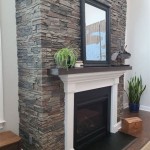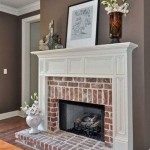Victorian Cast Iron Fireplace Covers: History, Design, and Modern Relevance
Victorian cast iron fireplace covers, also known as fire screens or summer covers, are decorative and functional elements that were popular during the Victorian era (1837-1901). They served primarily to conceal the fireplace opening when it was not in use, preventing drafts, dust, and debris from entering the room while simultaneously adding an aesthetic touch to the hearth. These covers were typically made of cast iron, a durable and relatively inexpensive material that allowed for intricate designs and mass production.
The rise of the Victorian cast iron fireplace cover coincided with the Industrial Revolution, which brought about significant advancements in metalworking technologies. Cast iron became readily available and affordable, enabling manufacturers to create elaborate and ornate designs that catered to the Victorian penchant for ornamentation and detail. The fireplace itself was a central feature of the Victorian home, representing warmth, comfort, and social gathering. Therefore, the fireplace cover became an important element in enhancing the overall aesthetic of the room.
The functionality of the fireplace cover remained paramount. During the warmer months, when the fireplace was not needed for heating, the cover effectively sealed the opening, preventing cold air from escaping and hot air from entering. This helped to maintain a more consistent temperature within the room and reduced drafts, contributing to a more comfortable living environment. In addition, the cover prevented soot, ash, and other debris from blowing into the room, thus simplifying cleaning and maintenance.
Historical Context and Evolution
The use of fireplace covers predates the Victorian era, but it was during this period that they reached their peak in popularity and design complexity. Prior to the widespread availability of cast iron, fireplace covers were often made of wood, fabric, or other materials. These earlier covers were generally simpler in design and less durable than their cast iron counterparts. The Victorian era saw a dramatic shift towards more elaborate and ornate designs, reflecting the opulent tastes of the time.
The designs of Victorian cast iron fireplace covers were heavily influenced by various artistic movements, including Gothic Revival, Renaissance Revival, and Aestheticism. Gothic Revival designs featured pointed arches, trefoils, and other architectural elements borrowed from medieval cathedrals. Renaissance Revival designs incorporated classical motifs such as acanthus leaves, scrolls, and cherubs. Aestheticism, a movement that emphasized beauty and artistic expression, led to the creation of covers with more abstract and stylized designs, often featuring floral patterns and geometric shapes.
The manufacturing process of Victorian cast iron fireplace covers typically involved creating a mold of the desired design. Molten cast iron was then poured into the mold and allowed to cool and solidify. Once the casting was removed from the mold, it was cleaned, polished, and sometimes painted or enameled to enhance its appearance. Mass production techniques allowed manufacturers to produce fireplace covers in a variety of sizes and designs, catering to different tastes and budgets. The availability of mass-produced covers made them accessible to a wider range of households, contributing to their widespread popularity.
Design Elements and Ornamentation
Victorian cast iron fireplace covers are characterized by their intricate designs and elaborate ornamentation. The level of detail and craftsmanship often reflects the social status and wealth of the homeowner. Wealthier households often opted for more elaborate and custom-designed covers, while more modest homes featured simpler, mass-produced designs. Regardless of their complexity, Victorian fireplace covers typically incorporated a range of decorative elements that added to their visual appeal.
Common design elements found in Victorian cast iron fireplace covers include floral patterns, foliage motifs, and animal figures. Floral patterns were particularly popular, reflecting the Victorian fascination with nature and botany. Roses, lilies, and other flowers were often depicted in intricate detail, adding a touch of elegance and romance to the fireplace cover. Foliage motifs, such as leaves, vines, and branches, were also frequently used, creating a sense of natural abundance and organic beauty. Animal figures, such as birds, lions, and mythical creatures, were sometimes incorporated into the designs, adding a touch of whimsy or grandeur.
In addition to these decorative elements, Victorian cast iron fireplace covers often featured geometric patterns, scrollwork, and other abstract designs. Geometric patterns, such as squares, circles, and triangles, added a sense of order and symmetry to the design. Scrollwork, which involved flowing curves and intricate lines, created a sense of movement and dynamism. Other abstract designs, such as stylized leaves, flowers, and geometric shapes, reflected the influence of Aestheticism and the desire to create visually appealing and aesthetically pleasing objects.
The finish of Victorian cast iron fireplace covers also played an important role in their overall aesthetic. Some covers were painted in solid colors, such as black, brown, or green, to create a simple and understated look. Others were enameled with bright and vibrant colors, such as red, blue, or gold, to add a touch of opulence and glamour. Some covers were even gilded with gold leaf to create a luxurious and extravagant appearance. The choice of finish often depended on the overall style of the room and the personal preferences of the homeowner. The craftsmanship also influenced the cost, with hand crafted and custom designs costing more compared to factory produced designs.
Modern Relevance and Restoration
Despite their age, Victorian cast iron fireplace covers remain highly sought after by collectors, interior designers, and homeowners who appreciate their historical significance and aesthetic appeal. Many antique stores, auction houses, and online marketplaces specialize in the sale of antique and vintage fireplace covers. These covers can add a touch of historical charm and elegance to any home, whether it is a Victorian-era property or a modern residence.
The restoration of Victorian cast iron fireplace covers is a specialized process that requires careful attention to detail and a thorough understanding of the materials and techniques used in their original construction. Over time, cast iron can rust, corrode, and become damaged. The paint or enamel finish may also fade, chip, or peel. Restoration involves cleaning the metal, removing rust and corrosion, repairing any damage, and reapplying a protective finish.
The cleaning of cast iron fireplace covers should be done with gentle methods to avoid damaging the original finish. Mild soap and water can be used to remove dirt and grime. A soft brush or cloth can be used to scrub the surface gently. Abrasive cleaners and harsh chemicals should be avoided, as they can scratch the surface or remove the paint or enamel. Once the cover is clean, it should be thoroughly dried to prevent rust from forming.
Removing rust and corrosion from cast iron fireplace covers is a more involved process that may require the use of specialized tools and techniques. Wire brushes, sandpaper, and chemical rust removers can be used to remove rust and corrosion. However, it is important to use these tools and chemicals with caution to avoid damaging the underlying metal. In some cases, it may be necessary to sandblast the cover to remove heavy rust and corrosion. However, sandblasting can also remove the paint or enamel finish, so it should only be done as a last resort.
Repairing damage to cast iron fireplace covers, such as cracks, chips, or broken pieces, may require professional restoration services. A skilled metalworker can weld or braze broken pieces back together and fill in cracks and chips with epoxy or other fillers. The repaired areas can then be smoothed and blended with the surrounding metal to create a seamless and invisible repair. The cost of such repairs can vary significantly based on the complexity of the damage and the level of craftsmanship required.
Reapplying a protective finish to a restored cast iron fireplace cover is essential to prevent future rust and corrosion. The choice of finish depends on the desired aesthetic and the original finish of the cover. Paint, enamel, and powder coating are all common options. Paint can be applied by brush, roller, or spray gun. Enamel is a more durable and glossy finish that is typically applied by professional enamelers. Powder coating is a durable and corrosion-resistant finish that is applied electrostatically and then baked in an oven.
When choosing a restoration method, it is generally advisable to retain as much of the original material and finish as possible, preserving the character and history of the piece. If extensive restoration is required, seeking the services of a professional conservator or metal restorer is highly recommended. They possess the specialized knowledge and skills to ensure that the restoration is carried out in a way that is both aesthetically pleasing and historically accurate. Properly restored, these Victorian fireplace covers can once again become a beautiful and functional element of the home.

A Mid Victorian Cast Iron Fireplace Insert Lassco England S Prime Resource For Architectural Antiques Salvage Curiosities

Victorian Cast Iron Fire Surround And Tiled Insert

Rare And Magnificent Cast Iron Circa 1900 Fireplace Surround Summer Cover With Stylized Griffin Vintage Victorian Tiles

Tradition Cast Iron Fireplace Insert 38 Victorian

Antique Fireplaces Full Circle Architectural Antiques

Buy Antique Neo Classical 19th Century Cast Iron Fireplace Surround

Ornate Four Piece Cast Iron Summer Fireplace Cover Architectural Antiques

Late Victorian Cast Iron Fire Surround 4596cs Antique Fireplace Co

Carron Cast Iron Fireplaces From Original Moulds

Original Late 19th Or Early 20th Century Cast Iron And Steel American Victorian Era Interior Residential








